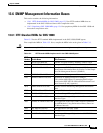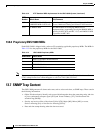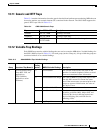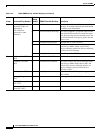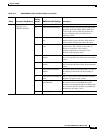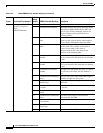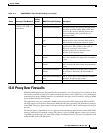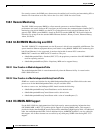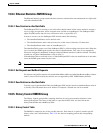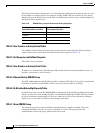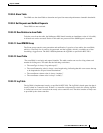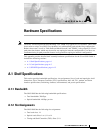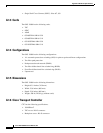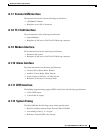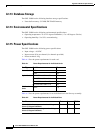
13-13
Cisco ONS 15600 Reference Manual, R7.2
Chapter 13 SNMP
13.8.4 Ethernet Statistics RMON Group
13.8.4 Ethernet Statistics RMON Group
The Ethernet Statistics group contains the basic statistics monitored for each subnetwork in a single table
called the etherStatsTable.
13.8.4.1 Row Creation in etherStatsTable
The SetRequest PDU for creating a row in this table should contain all the values needed to activate a
row in a single set operation, and an assigned status variable to createRequest. The SetRequest PDU
object ID (OID) entries must all carry an instance value, or type OID, of 0.
In order to create a row, the SetRequest PDU should contain the following:
•
The etherStatsDataSource and its desired value
•
The etherStatsOwner and its desired value (size of this value is limited to 32 characters)
•
The etherStatsStatus with a value of createRequest (2)
The etherStatsTable creates a row if the SetRequest PDU is valid according to the above rules. When the
row is created, the SNMP agent decides the value of etherStatsIndex. This value is not sequentially
allotted or contiguously numbered. It changes when an Ethernet interface is added or deleted. The newly
created row will have etherStatsStatus value of valid (1).
If the etherStatsTable row already exists, or if the SetRequest PDU values are insufficient or do not make
sense, the SNMP agent returns an error code.
Note
EtherStatsTable entries are not preserved if the SNMP agent is restarted.
13.8.4.2 Get Requests and GetNext Requests
Get requests and getNext requests for the etherStatsMulticastPkts and etherStatsBroadcastPkts columns
return a value of zero because the variables are not supported by ONS 15600 Ethernet facilities.
13.8.4.3 Row Deletion in etherStatsTable
To delete a row in the etherStatsTable, the SetRequest PDU should contain an etherStatsStatus value of
4 (invalid). The OID marks the row for deletion. If required, a deleted row can be recreated.
13.8.5 History Control RMON Group
The History Control group defines sampling functions for one or more monitor interfaces in the
historyControlTable. The values in this table, as specified in RFC 2819, are derived from the
historyControlTable and etherHistoryTable.
13.8.5.1 History Control Table
The RMON is sampled at one of four possible intervals. Each interval, or period, contains specific
history values (also called buckets). Table 13-6 lists the four sampling periods and corresponding
buckets.



